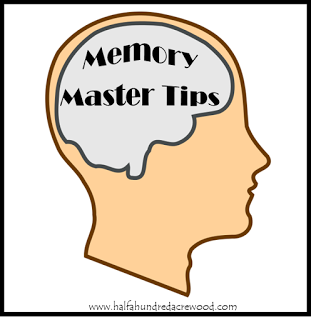
#Memory master cracker
You could imagine an elephant (E) walking towards a monkey (m) that’s holding a square-shaped cracker (c 2). Or maybe you’re trying to memorise the formula E = mc 2. You could make up a story where you’re having a PE (physical education) class, when suddenly you see your mother (m), grandmother (g) and a horse (h) standing together. Let’s say that you’re trying to learn the formula for gravitational potential energy (P.E. Create a storyĪnother effective memory technique is to build a story around the facts that you’re trying to memorise. It also helps that the first two letters of “pillow” form the word “pi”. In addition, “May I have a pillow?” is a mnemonic you can use to memorise the value of pi: 3.1416 (“may” has 3 letters, “I” has 1 letter, and so on). M y Very Excited Mother Just Served Us Noodles is a mnemonic you can use to remember the order of the eight planets in our solar system: The exception is when “i” comes after “c” – as in “receive” and “ceiling”. This mnemonic reminds students that the letter “i” usually comes before “e” when spelling various words – as in “lie,” “belief” and “pie”.
#Memory master series
Stala gmites (a type of rock formation) grow from the ground, while stala ctites grow from the ceilingĪcronyms and mnemonics are also useful memory techniques for students.Īn acronym is an abbreviation formed from the first letter of a series of words.įor example, PEMDAS is an acronym for remembering the order of operations in math:Ī mnemonic is a short phrase used to remember a rule or a principle, such as “i” before “e” except after “c”.“Ne ce ssary” has one “c” and two “s’s”, just as a shirt has one collar and two sleeves.“Gr ey” is used in England, whereas “gr ay” is used in America.Sometimes words sound the same or have similar spelling.Īnd some words are just difficult to spell.įor example, here’s how you can use sounds or letters to remember these facts: “Match” information with sounds or letters Images are powerful as a memory technique, because they’ll enable you to retain more information while spending less time studying overall.

You could imagine a man walking on the moon with a nail (“nail” sounds like “Neil”) in his muscular arm (to remind you of the word “Armstrong”). Let’s say that you want to remember that Neil Armstrong was the first human to step on the moon. Crying is generally considered to be a negative event, so anions are negatively charged. “Anion” kind of sounds like “onion”, and onions can make you cry.“Paws” reminds you of “positive”, so cations are positively charged. Imagine a cat, and think about the fact that cats have paws.The more ridiculous the image, the easier it will be to remember.įor example, to remember that cations are positively charged ions and anions are negatively charged ions, you could… But not just any image – try to make the image funny or exaggerated. Take a fact that you want to remember and convert it into an image. That’s why turning words or equations into images is an effective memorisation technique. So it’s no surprise that we remember images better than words. We also process visual information 60,000 times faster than words.

In fact, 90% of the information that our brains process is visual. The human brain processes images faster than words. I’m confident that you’ll find them useful! 1.

As you prepare for your next exam, try out a few of the following memory techniques for students.


 0 kommentar(er)
0 kommentar(er)
